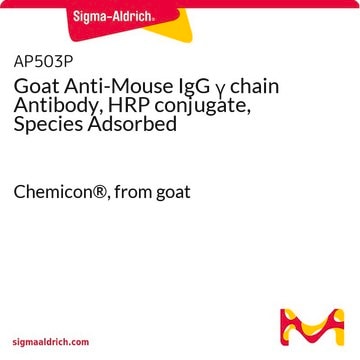おすすめの製品
由来生物
mouse
品質水準
抗体製品の状態
purified antibody
クローン
15F3-1, monoclonal
化学種の反応性
human
メーカー/製品名
Chemicon®
テクニック
immunofluorescence: suitable
アイソタイプ
IgG1
輸送温度
wet ice
詳細
Dengue fever is an acute, mosquito-transmitted viral disease characterized by fever, headache, arthralgia (severe retro-orbital pain), myalgia, rash, nausea, and vomiting. Infections are caused by any of the four closely related, but antigenically distinct virus serotypes (DEN-1, DEN-2, DEN-3, and DEN-4). Infection with one of these serotypes does not provide cross-protective immunity, so persons living in a dengue-endemic area can have four dengue infections during their lifetimes. Dengue is primarily an urban disease of the tropics, and the viruses that cause it are maintained in a cycle that involves humans and Aedes aegypti, a domestic, day-biting mosquito that prefers to feed on humans. Although most dengue infections result in relatively mild illness, some can produce Dengue Hemorrhagic Fever (DHF) or dengue shock syndrome, with children being particularly at risk. Although epidemic outbreaks have been reported since 1779, the incidence has been increasing, with global, multiple serotype pandemics intensifying within the last 15 years. There is no specific antiviral therapy for dengue, but for both classical dengue and dengue hemorrhagic fever, symptomatic and supportive measures are effective. Important risk factors for DHF include the strain and serotype of the virus involved, as well as the age, immune status, and genetic predisposition of the patient.
特異性
Reacts with the Dengue type 1 virus. May show reactivity with Dengue type 2 virus.
免疫原
Dengue type 1 (Hawaiian) virus antigen.
アプリケーション
Anti-Dengue Virus Type I Antibody, clone 15F3-1 detects level of Dengue Virus Type I & has been published & validated for use in IF.
Immunofluorescent assay. Final working dilutions must be determined by end user.
物理的形状
0.02M Phosphate Buffer, pH 7.6, 0.25M NaCl and 0.1% sodium azide.
Format: Purified
その他情報
Concentration: Please refer to the Certificate of Analysis for the lot-specific concentration.
法的情報
CHEMICON is a registered trademark of Merck KGaA, Darmstadt, Germany
保管分類コード
10 - Combustible liquids
WGK
WGK 2
引火点(°F)
Not applicable
引火点(℃)
Not applicable
適用法令
試験研究用途を考慮した関連法令を主に挙げております。化学物質以外については、一部の情報のみ提供しています。 製品を安全かつ合法的に使用することは、使用者の義務です。最新情報により修正される場合があります。WEBの反映には時間を要することがあるため、適宜SDSをご参照ください。
Jan Code
MAB8701:
試験成績書(COA)
製品のロット番号・バッチ番号を入力して、試験成績書(COA) を検索できます。ロット番号・バッチ番号は、製品ラベルに「Lot」または「Batch」に続いて記載されています。
Sambashiva Banala et al.
ACS chemical biology, 8(10), 2127-2132 (2013-08-15)
Detection of antibodies is essential for the diagnosis of many diseases including infections, allergies, and autoimmune diseases. Current heterogeneous immunoassays require multiple time-consuming binding and washing steps, which limits their application in point-of-care diagnostics and high-throughput screening. Here, we report
ライフサイエンス、有機合成、材料科学、クロマトグラフィー、分析など、あらゆる分野の研究に経験のあるメンバーがおります。.
製品に関するお問い合わせはこちら(テクニカルサービス)





